Van der Gang 20019 Chronograph – A Stylish, Balanced Chrono from The Netherlands
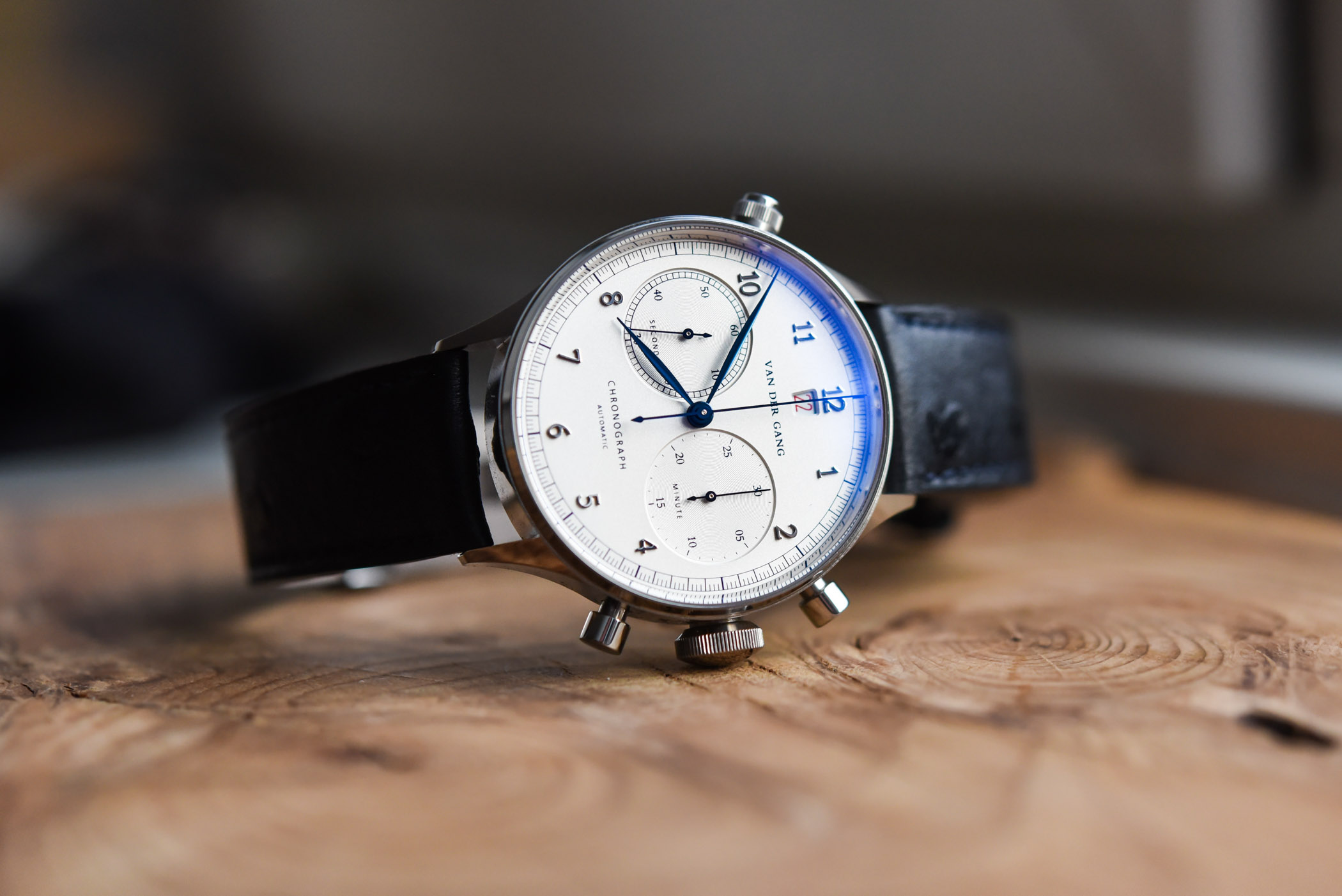
Balance is key in watches, not only from an engineering perspective but also as a code of conduct when it comes to design. Wybe van der Gang, namesake and founder to the Van der Gang watch manufacture based in Dokkum, the Netherlands, has made this the core of his brand. Balanced, stylish design, with intriguing details and features, through all the collections. We go in-depth with one of their striking watches, the Van der Gang 20019 Chronograph.
The search for the perfect balance between functional technicality, simplicity in designs and ease of use has been present from the beginning of this watchmaking story. Launching a precision-engineering company dedicated to aerospace technology, clockwork, medical and laboratory technology industries, which quickly grew into an international renowned player in the field of fine mechanics, the ultimate dream for Wybe van der Gang was to eventually use his knowledge and experience gathered over the years with his Exakt Fijnmechanika (Dutch for Fine Mechanics) to produce watches.
Designing the first watch in 2002 and launching it as the Van der Gang Original, in 2004, no more than 250 copies would be made. The dedication and belief that there is always a market for a beautiful mechanical product served him right and the 250 pieces are long gone and absolutely no more will follow, according to the maker. His philosophy of the final five percent is where he feels he sets himself and his products apart, in that final push for perfection. And, to be honest, he came a long way and can hold his own when compared to several esteemed brands from Switzerland, but more on that later.
Since 2008 already, speciality equipment was installed in the workshop, to produce as much as possible in-house. And even though movements are based on existing ébauches, much is reworked to attain the desired level of finishing, with complications being developed and produced by Van der Gang themselves.
Van der Gang Watches offers a range of collections, from time-only to complications, and even a ladies’ watch. For now, we focus on the chronograph, the Van der Gang 20019 to be precise. Its chronograph watch comes in several versions, even with an additional moon phase indication if desired.
Case and Strap
The case for each Van der Gang watch is manufactured in-house and produced with a process called wire erosion. It starts out with a 1kg block of steel and ends up with a case that weighs only 18 grams when finished. Wire erosion is a technique that uses high-voltage electrical discharges to cut the steel to an almost finished part, with a sleek and detailed result. All holes, taps and threads are milled after the cutting, and a touch of hand finishing and polishing is applied to achieve the best possible result and hardened before being assembled.
The steel case of the Van der Gang 20019 measures 41mm across although it initially appears to be slightly larger. Part of that effect is due to the aforementioned balance in design, with relatively long but slim lugs, and a super-thin bezel with a dial as large as possible. When it comes down to size, the Van der Gang 20019 appears to be quite a substantial watch, but the case is actually slimmer than the numbers would lead you to believe – just like the IWC Portugieser Chronograph for example (a watch that you might have in mind after reading the beginning of this review). The IWC is known to be rather thin for an automatic chronograph – 12.6mm thick – and the Van der Gang measures 12.65mm. Again, this is the result of its design, with high flanks for the case, concave caseback and sharply angled lugs. When wearing the Van der Gang 20019, this rather large appearance evaporates and it becomes a very comfortable companion.
The crown construction for all Van der Gang watches is another in-house developed technique and is designed to be extra sturdy in day-to-day use. The large flat crown grips easily and is matched with two classically styled chronograph pushers at 2 and 4 o’clock, and balanced aesthetically with the extra pusher at 11 o’clock, used as a quick-set for the date.
Design for all watches by Van der Gang are classical, but with modern touches. The large crown for instance, or the placement of an extra pusher, and even the use of colour on a dial. Light green on the dial and hands of their Vlieger (the Aviator watch) or the red date set on an ivory white dial is another example, something that grabbed our attention.
The Van der Gang 20019 comes on a Cognac alligator leather strap, but can be delivered with a selection of additional straps if desired. Van der Gang hosts a webshop-section on its website with an array of straps available in various materials and colours. Alligator, calf or ostrich leather or perhaps a two-part nylon strap, surely something will fit your style. All straps are fitted with a folding clasp, as are the nylon straps.
Dial and hands
The dial of each Van der Gang looks clean, uncluttered, despite often displaying more than only time. Whether it is in this 20019, or even a Chronograph with a moon phase, the dial is subtle, restrained, but never boring. The dial of the Van der Gang 20019 Chronograph is designed in-house but supplied by a third party. No issues here, dial-making is often outsourced. The well-balanced white dial displays the chronograph function through the central seconds and a 30-minute counter at 3 o’clock. The other sub-dial shows the running seconds indication and on top, you can find the red-on-white date in a slightly skewed window, which is a welcome change from some standard placements we see, accompanied by the brand name.
The sub-dials are finished with a fine circular pattern. The blued leaf-shaped hands contrast nicely with the white dial. The Arabic numerals are rhodium-plated by Van der Gang before being applied to the dial. The fact that all hands are blued is a nice touch, no unbalanced colours or other discrepancies. On the outside of the dial, you see a minute track which gets reflected by the polished edge of the bezel. This enlarges the dial even more, at least visually.
The dial is finished with the name of the brand, as mentioned, and also the words “Chronograph” and “automatic” at the bottom. The best part is that these extra markings are done very finely, not intrusive to the important parts of the dial. It is covered by a sapphire crystal with anti-reflective coating.
Movement
The Van der Gang 20019 Chronograph is equipped with a Valjoux 7753 automatic movement, with an in-house date complication. The Valjoux 7753 is a tried-and-tested chronograph movement, virtually bulletproof and easily serviced. The movement itself measures 30mm across and 7.9mm thick. On a fully wound mainspring, it will run for 48 hours without the need to strap it on again, if you can take it off in the first place.
From the early days of Van der Gang, developing as much as possible in-house has been part of the brand’s philosophy. Wybe van der Gang has even set out to develop his own perpetual calendar movement, a true testament of his watchmaking skill. This movement has been in development for several years now and apparently, a working prototype is being tested, so let’s hope he succeeds in his mission and is able to present it soon.
The movement is operated through the crown to set the time and date, the chronograph is started with the pusher at 2 and stopped or reset with the pusher at 4 o’clock. The final pusher, positioned at 11 o’clock is used as a quick adjuster for the date. The large diameter of the Valjoux 7753 movement fits the case rather well and is visible through the sapphire crystal caseback.
Conclusion
To be honest, this Dutch-made watch impressed us. The execution and detailing and styling are on par with, for instance, the aforementioned IWC Portugieser Chronograph. From the case machining to the details of the dial and hands, this watch oozes quality. The Van der Gang 20019 is a very solid, comfortable watch to own and wear, and certainly worth your consideration.
The level of in-house manufacturing of the case and (parts of the) movement, paired with the elegant design and some of the interesting features, make this a solid package. The price for a Van der Gang 20019 starts at EUR 8,600 for the steel version and climbs to EUR 21,500 for the rose gold with moon phase function.
To be honest, being Dutch and all, it makes us proud that something as good as this is being produced in our country. Over the past few years, we have seen various interesting, highly original brands in the Netherlands, and it is comforting to see the level of watchmaking some people are able to bring to the table. Think of Holthinrichs Watches, with the 3D printed steel or gold cases, the Grönefeld’s, of course, being at the very top-end of the scale, but also a brand like Van der Gang. A brand with a production run of about 150 watches per year, Van der Gang has been soldiering on for 16 years and found its place on the map. More information on VanderGang.nl.

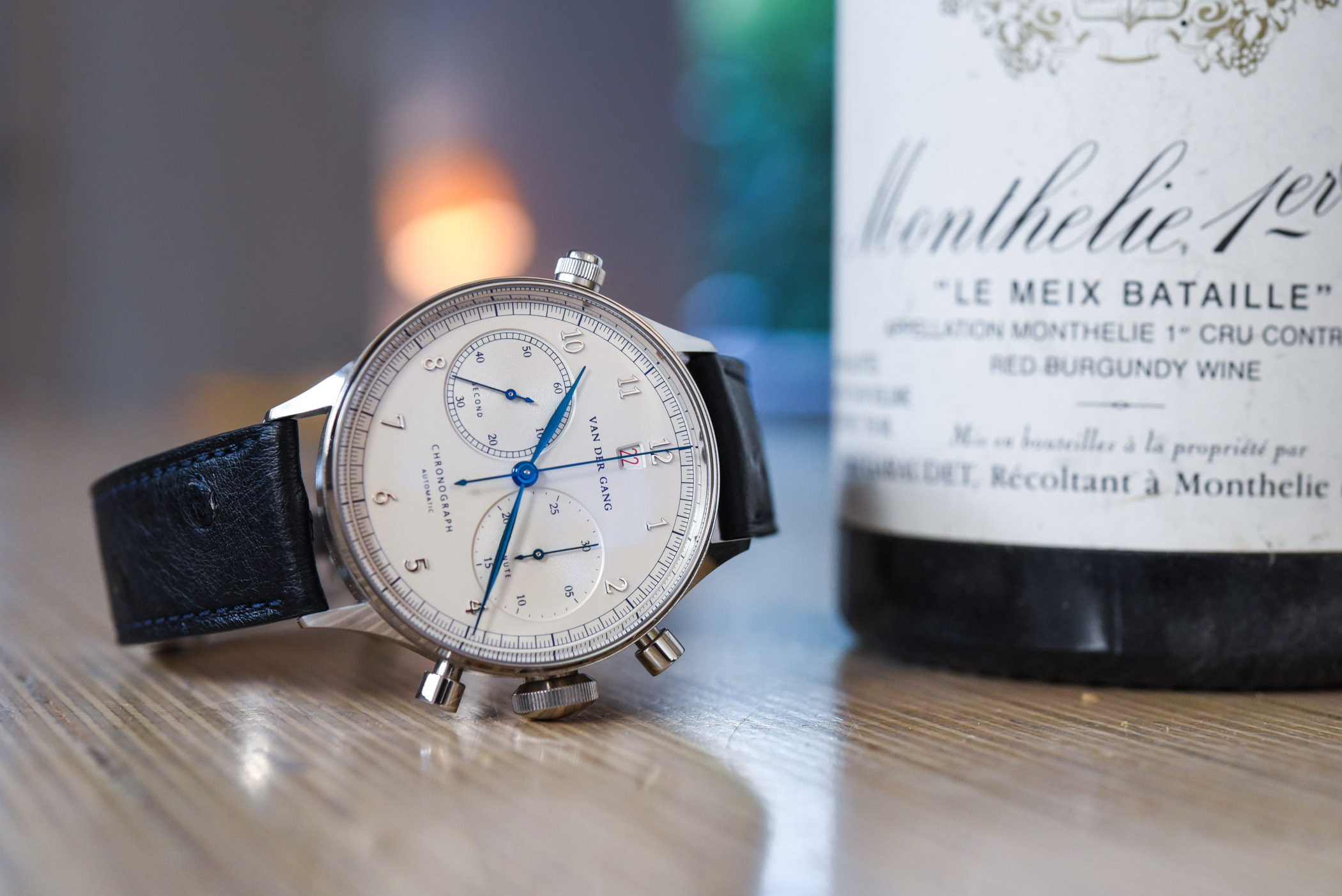

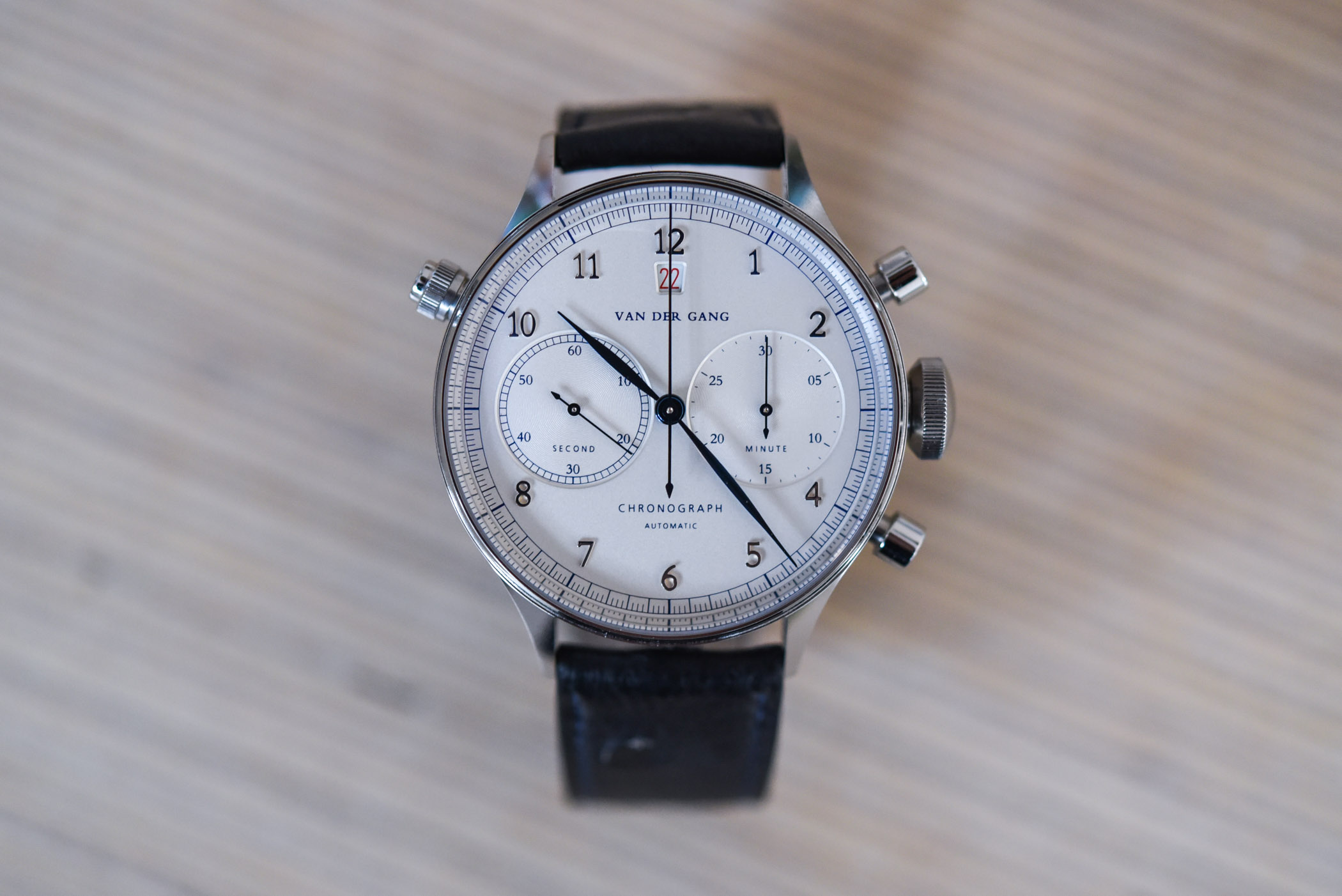
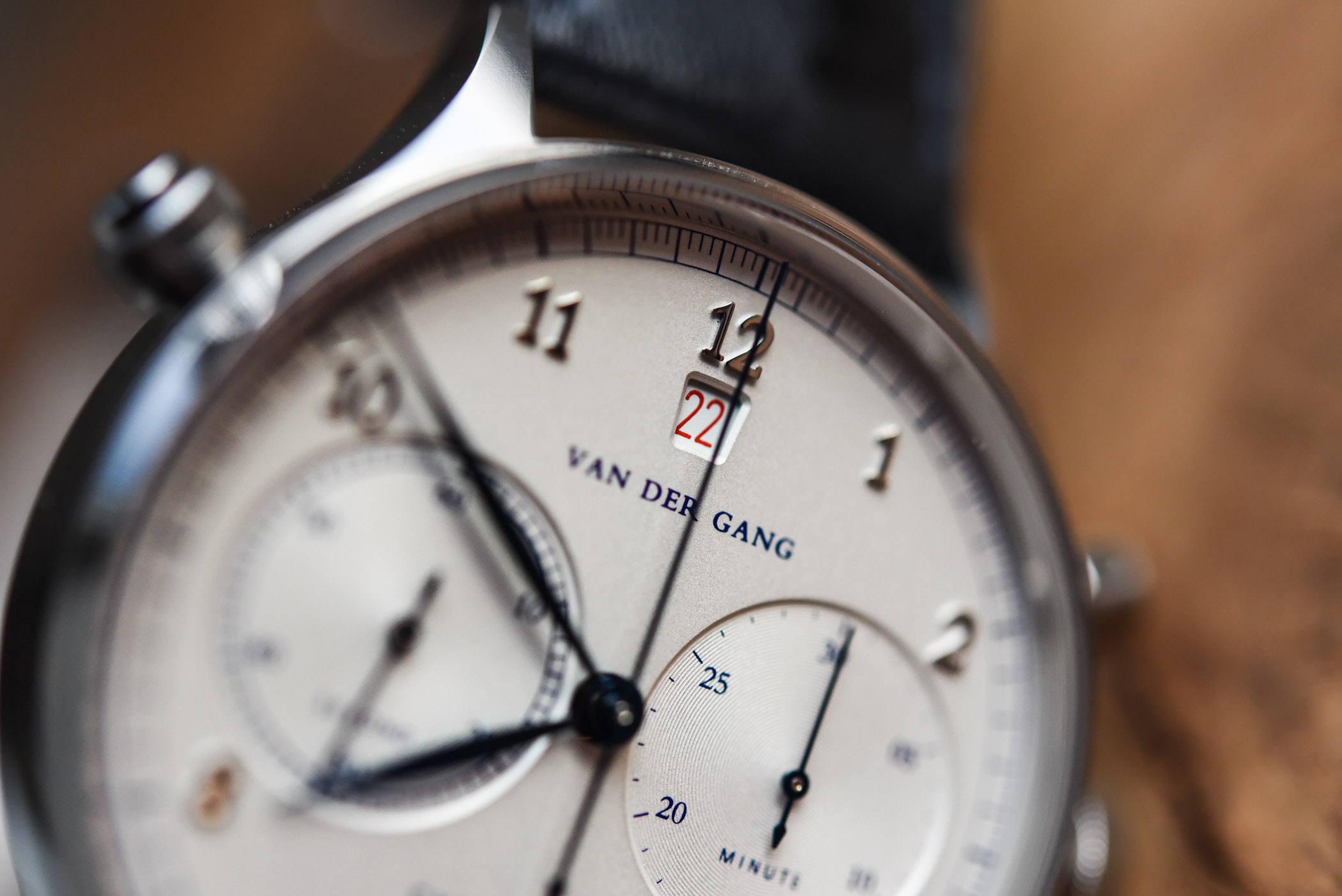
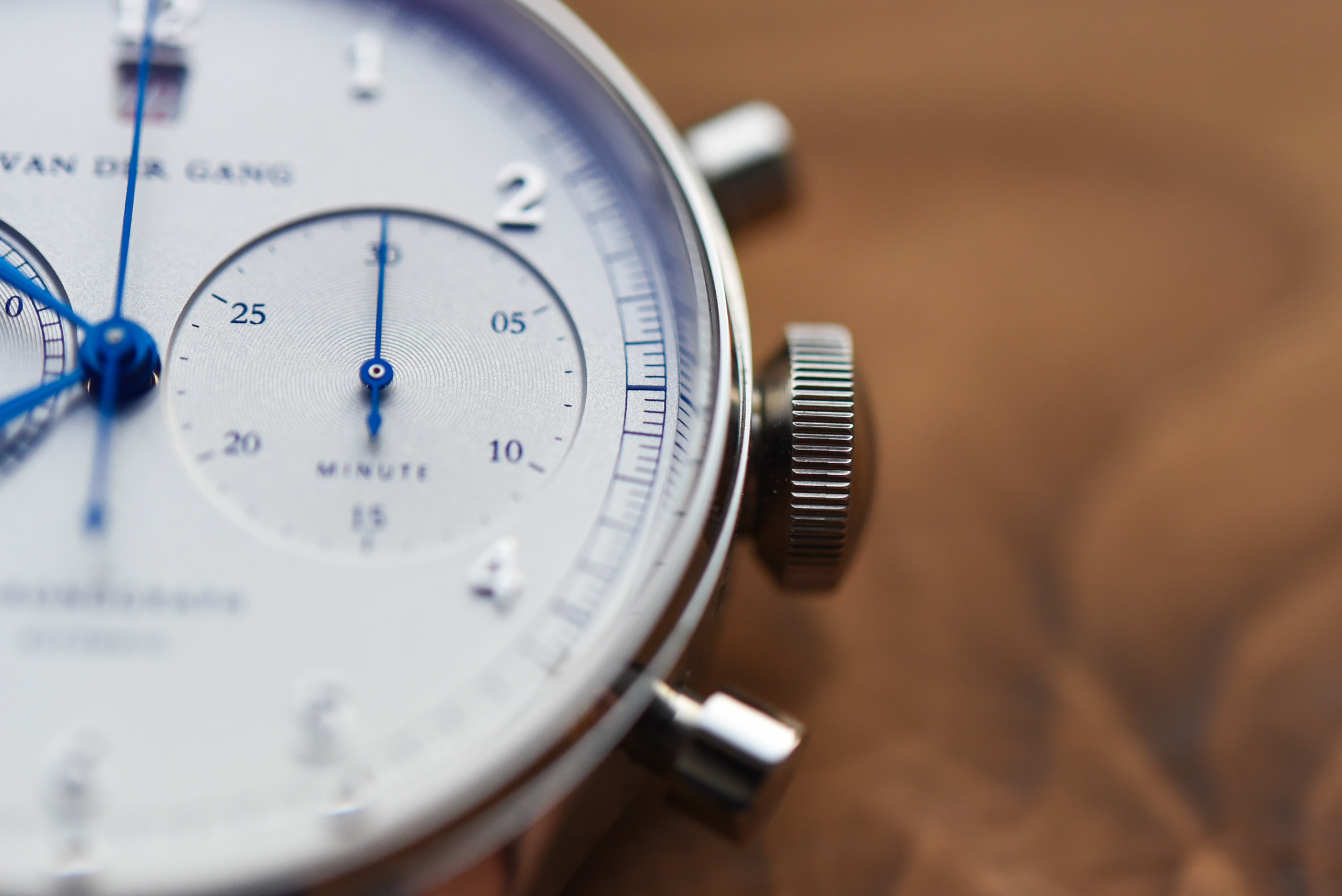
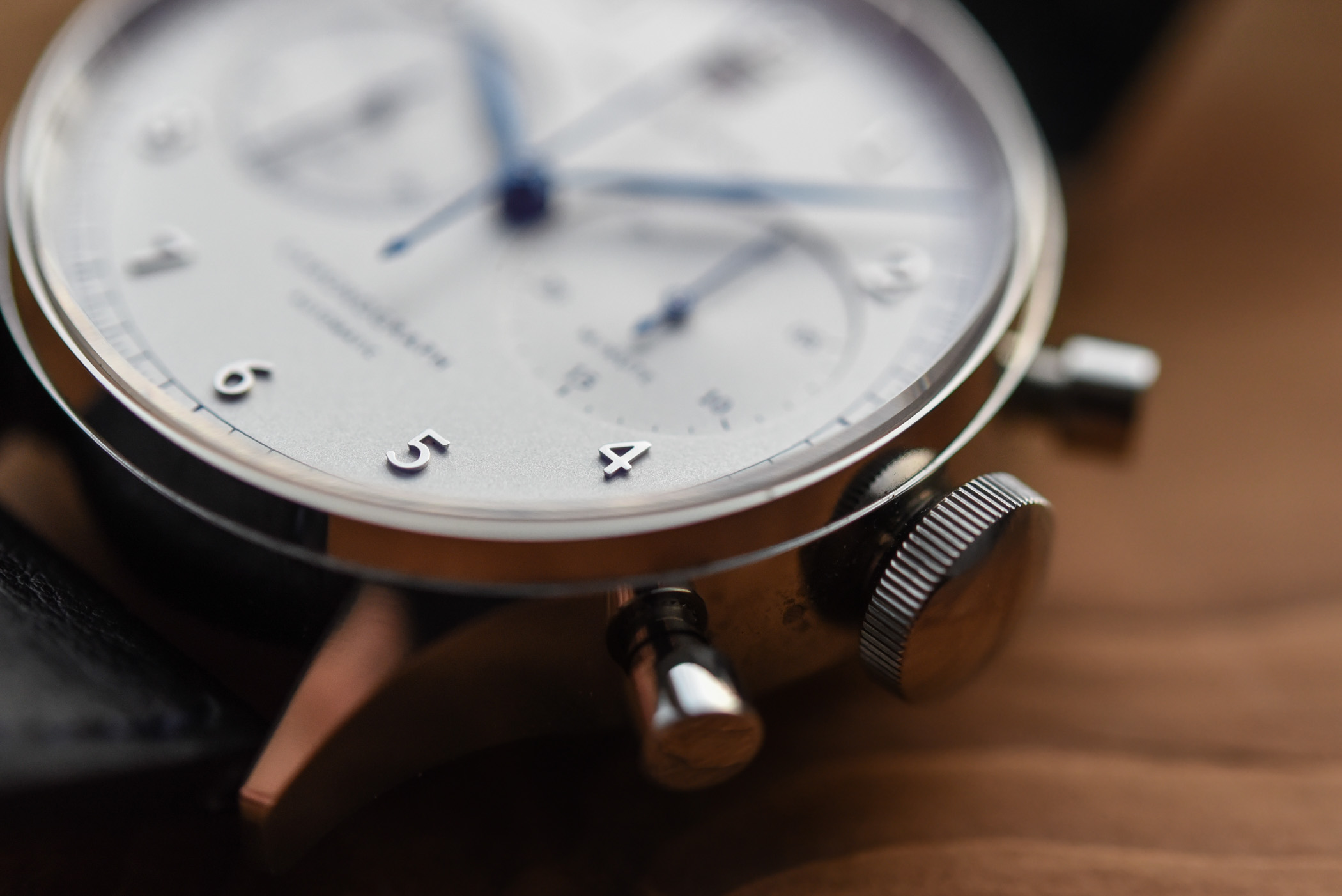
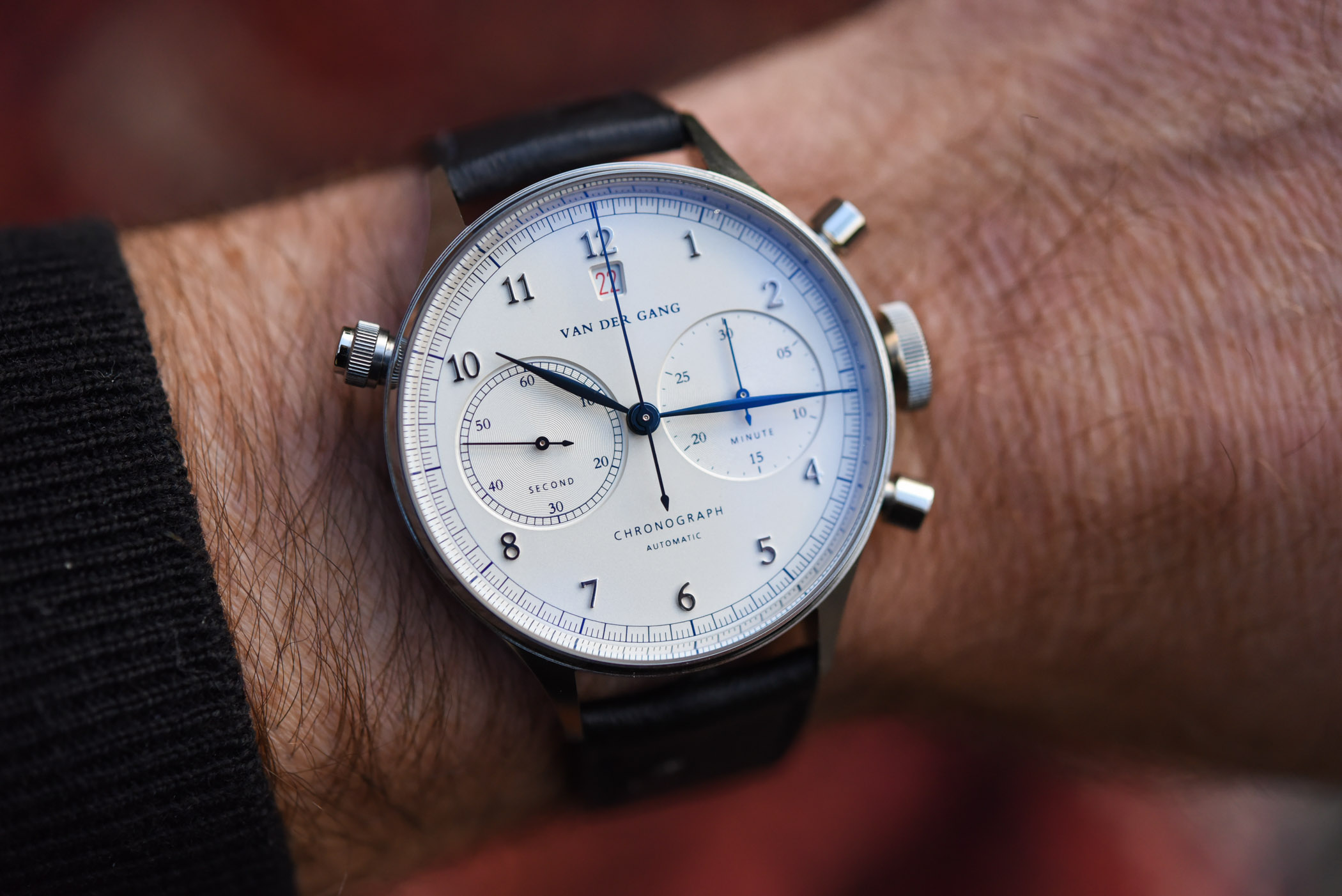
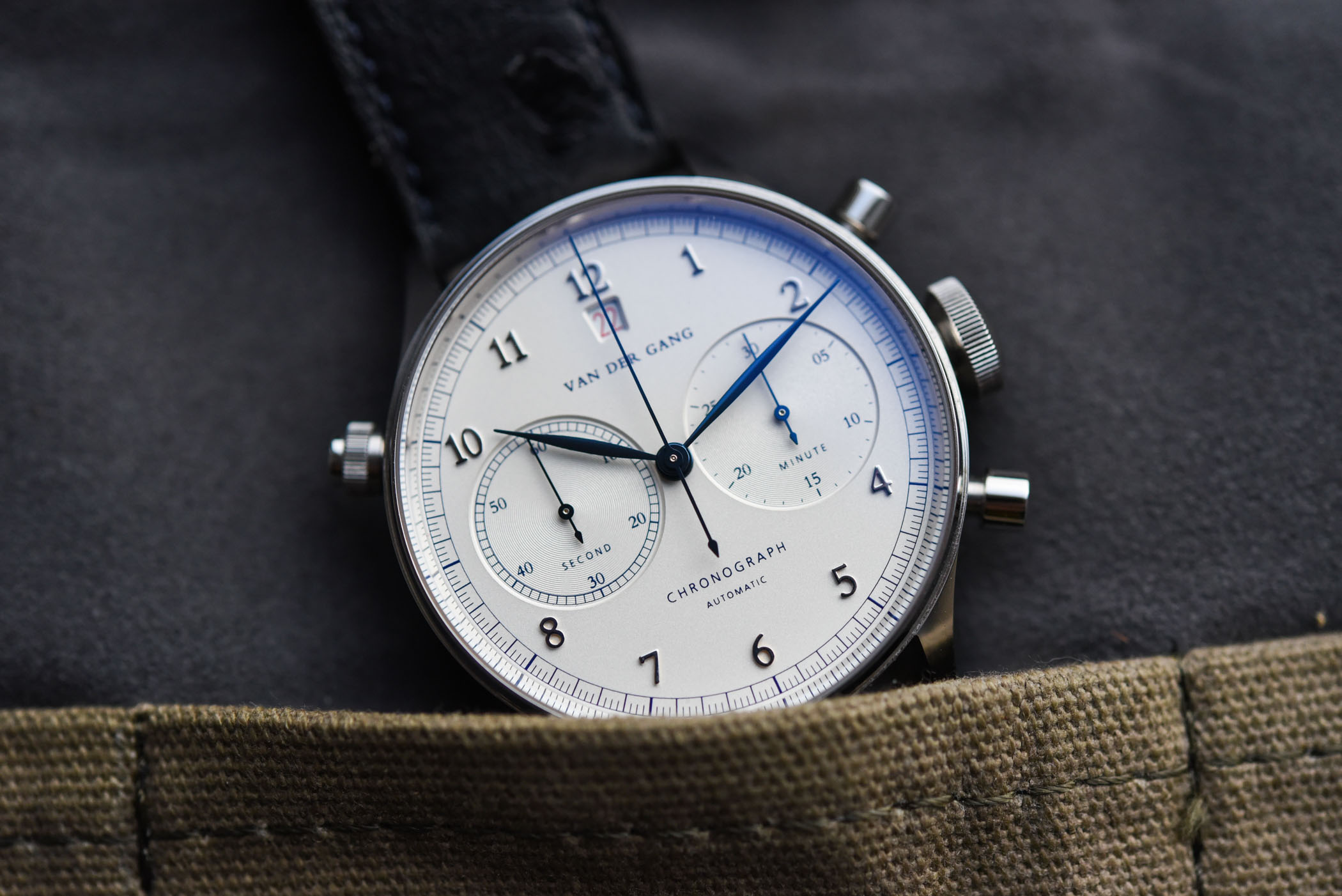
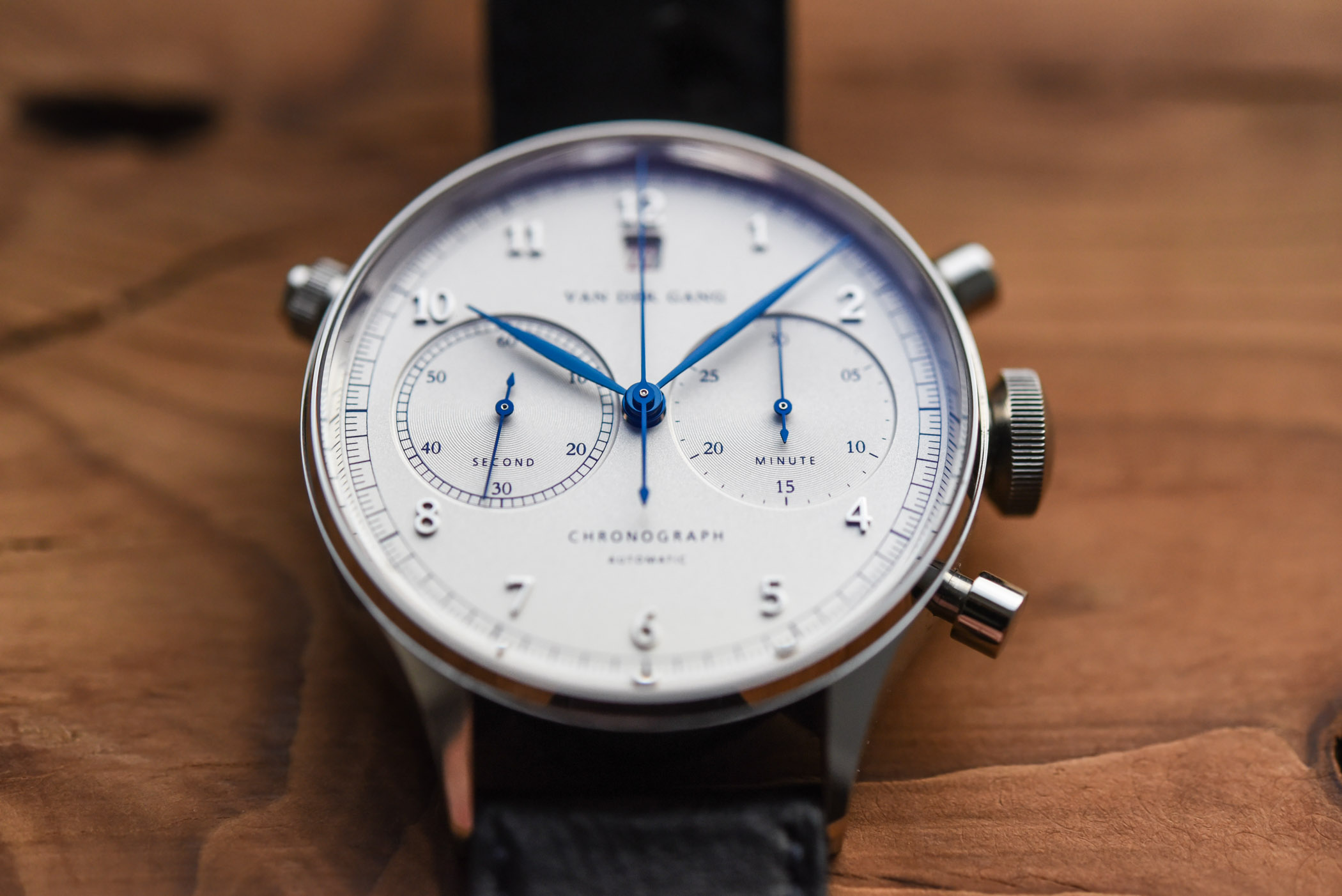
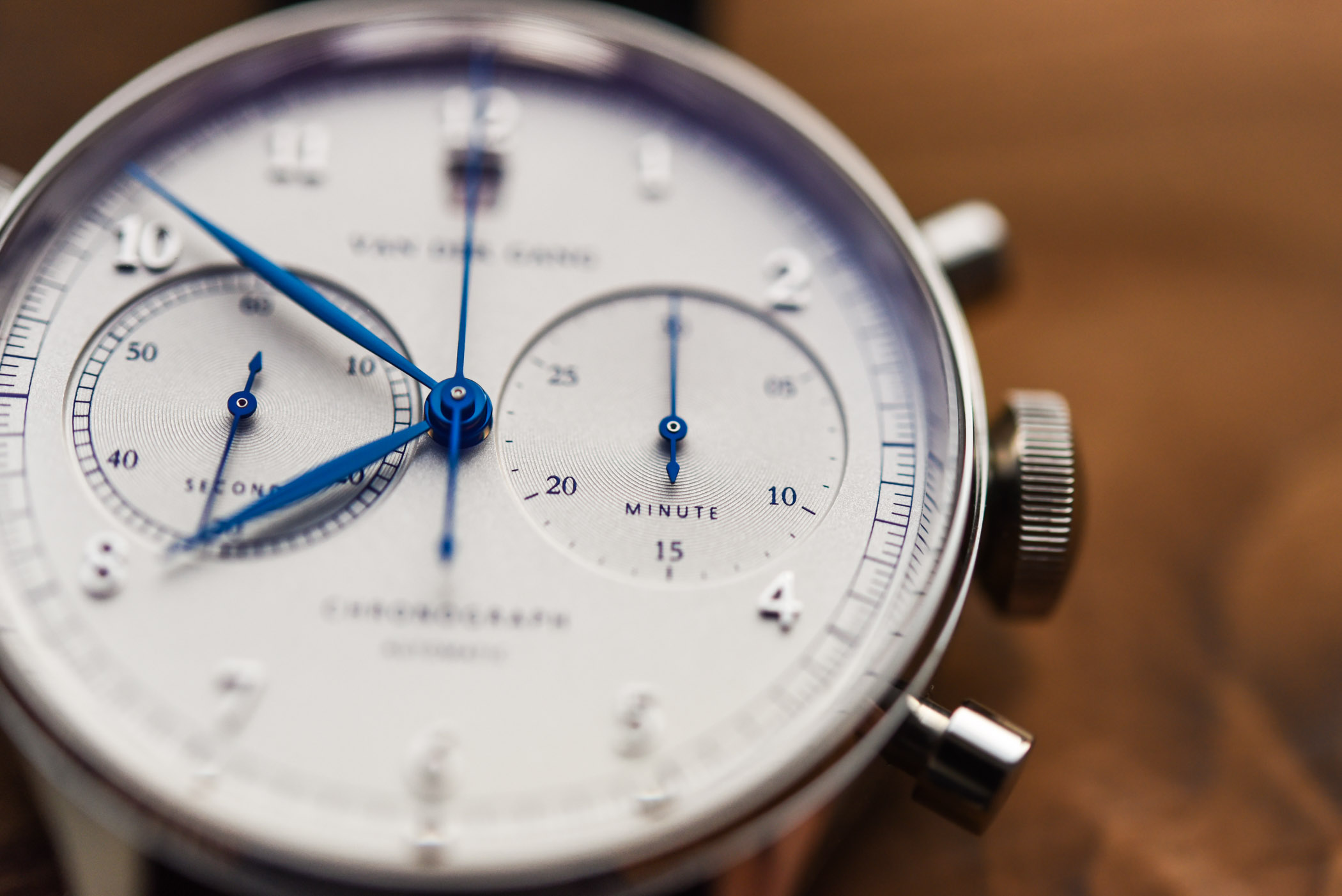
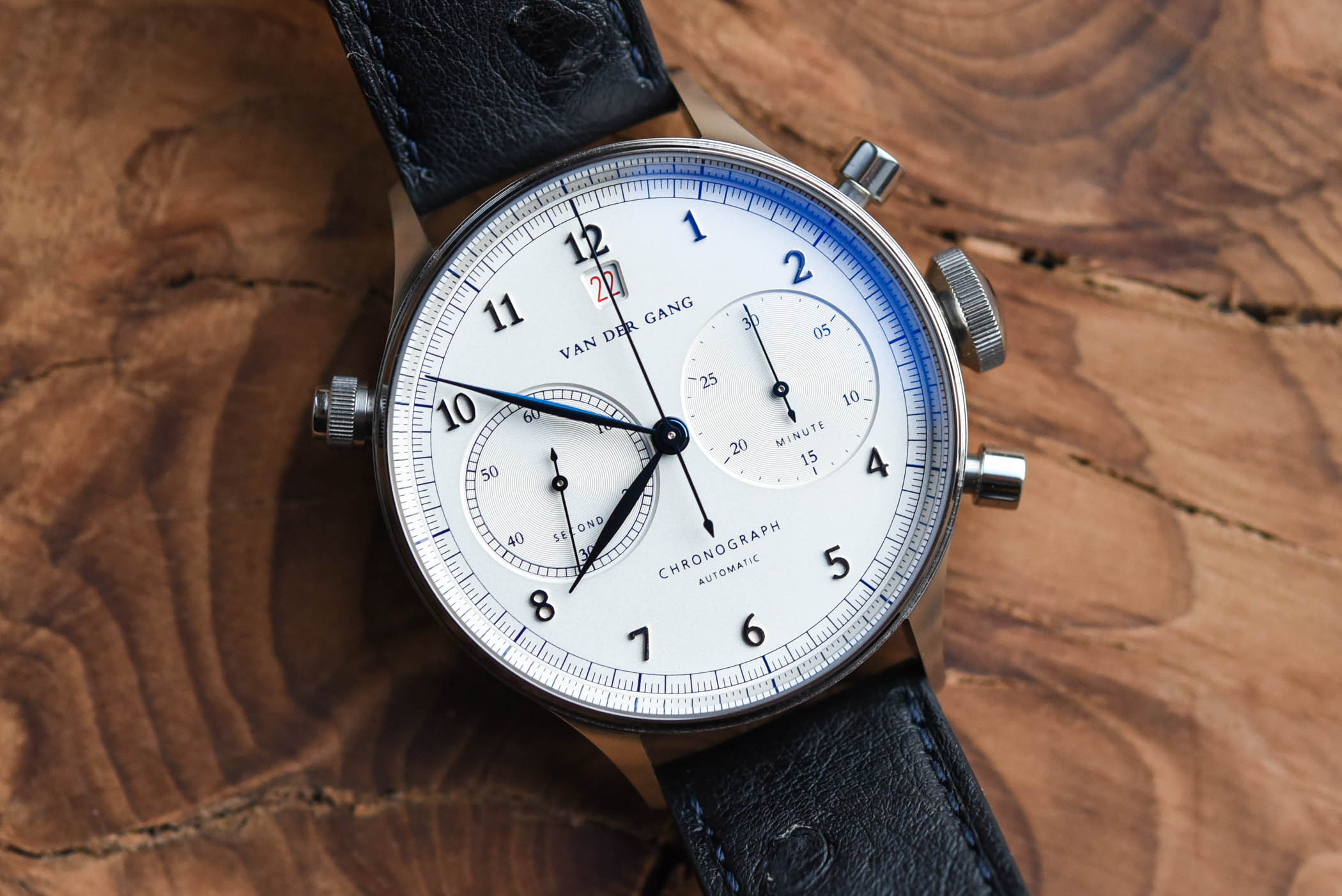
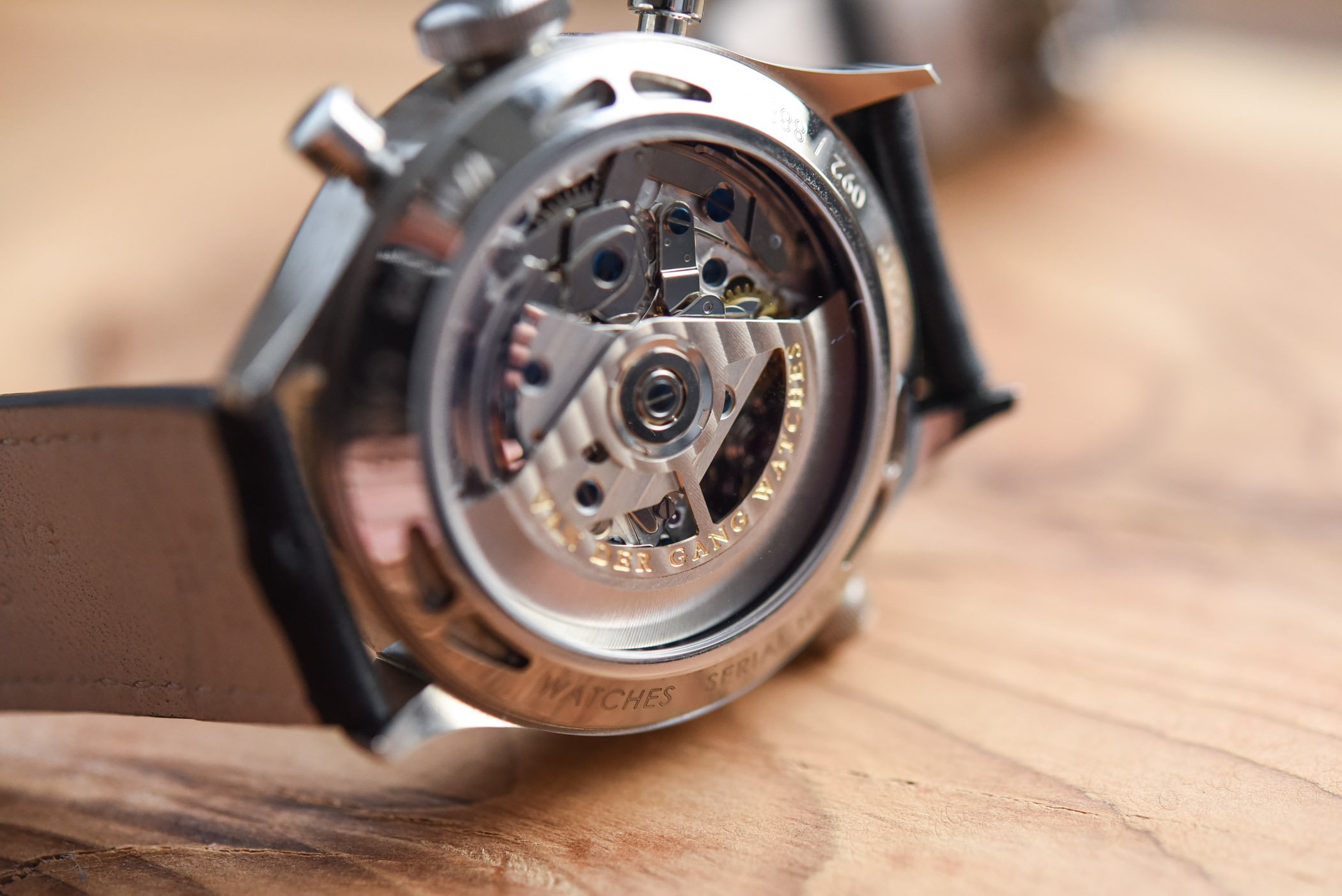
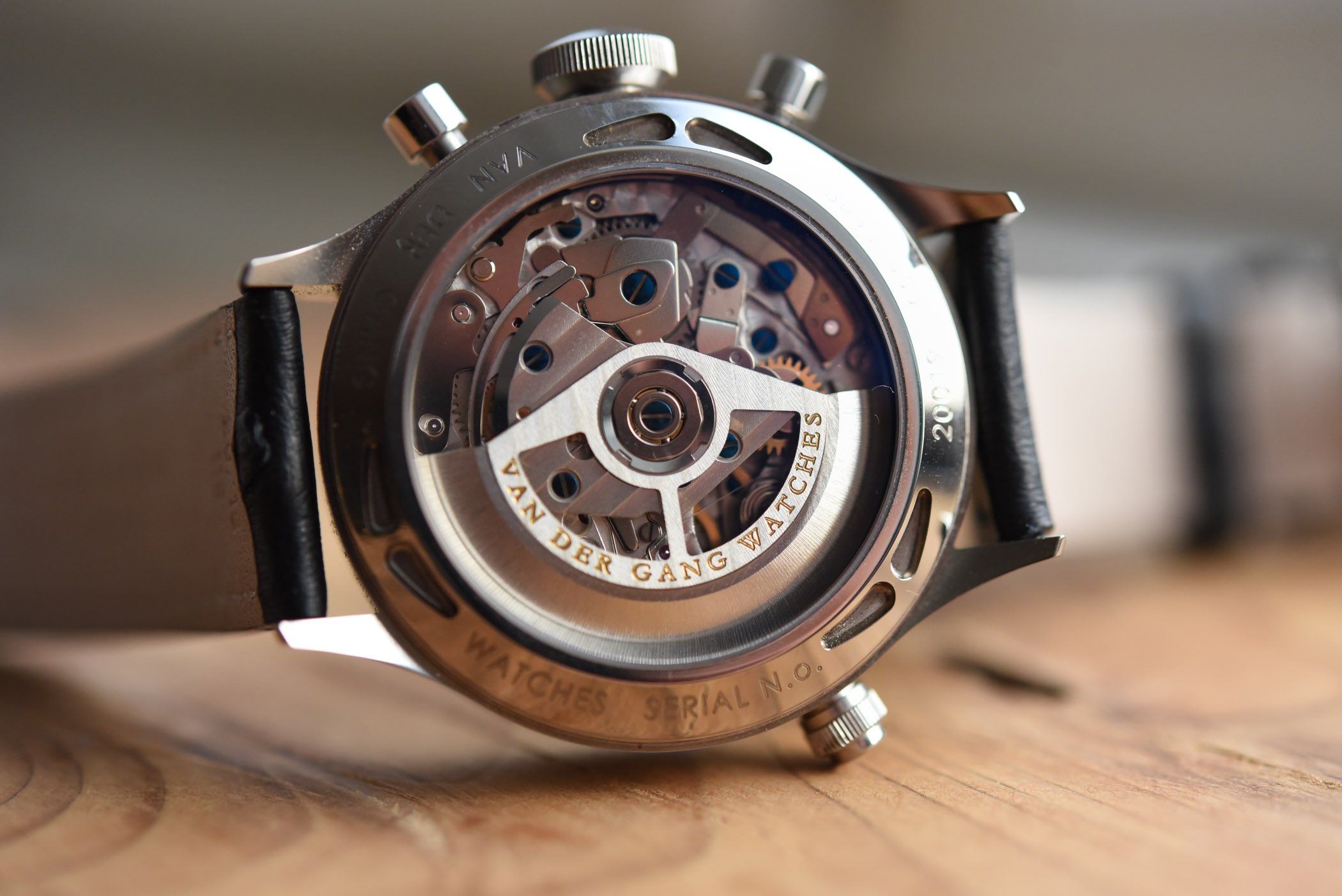

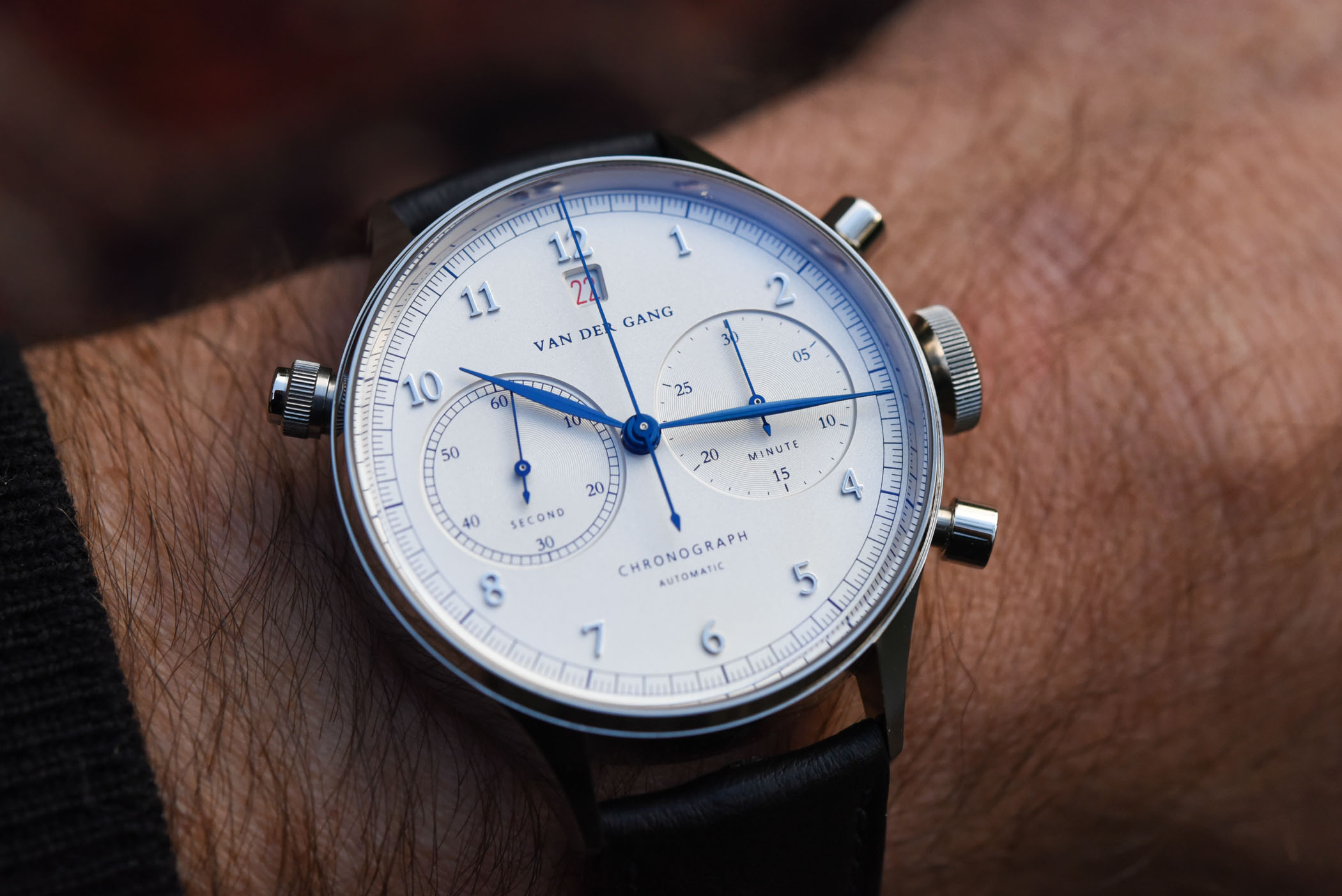



8 responses
Why waste time making an inferior date function on a 7750? The extra pusher is a bit silly on a movement with quick shift as standard feature.
Why 1kg of steel to make an 18g case? Does that not sound a bit wasteful or inefficient?
@Rasmus… this is not a standard 7750, but a 7753. The difference is the layout of sub dials. A normal standard 7750 has a date function and so does the 7753. The 7750 has a 6-9-12 sub dial layout, whereas the 7753 has a 3-6-9 sub dial layout. On the 7753 it was not possible to have the quick adjustment of the date to be operated through the crown, thus it comes with an extra pusher at 10 o’clock. Van der Gang made some adjustments that are manufactured in-house.
Although we usually do not write about this part of watchmaking (as most brands do not make their own watch cases), in many cases (pun intended) it is exactly the same. They start with one block of metal and machine it down to the case’s proportions. With cheaper watches the case is stamped from a ‘thick sheet of metal’. The disadvantage of this way of making a case is that the metal slightly deforms during the stamping. Pretty much all high-end watches come with a case that is machined from one block of metal.
I do not see anyone that is a bit into horology, so being aware that this is a 7750-based movement (sure, as the IWC guys say…modified, very modified..), spending 8’600 euros on those pieces that show up as mushrooms after first rain….at the end of the day, that’s quite a piece of investment for the buyer (with quite a nice chunk of profit for the brand)….importantly, while one may get on resale perhaps 50% back, say with an IWC Portugiese chrono, in this case, I guess, resale market is nearly zero…my 10 cents…
@ Itzhik: “mushrooms after first rain”
That’s brilliant.
I love chronographs and I like it, but it would take a bit more to get me there, for example a flyback complication and a column wheel or an hour register on their vlieger in smaller case. The price is in habring2 range which is a challenge even for a heavily modified 7753.
Another nice one, that is two in a row. Don’t get the mushrooms reference though. As for resale. Who cares. I have never sold a watch.